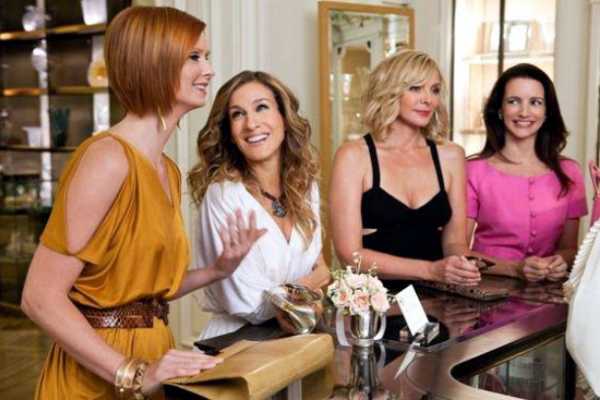5 the most beautiful metro stations in Moscow. The most beautiful in moscow is red square
Red Square in Moscow | Moscov travel information
Red Square is the main square of Moscow and the most visited place in the capital of Russia. The most famous Moscow sights, such as the Moscow Kremlin and St. Basil's Cathedral are located near Red Square. The square is located in the city centre, along of the Kremlin eastern wall. Currently, it is a pedestrian area. The total length of the Red Square is 330 meters, width - 70 meters, the area about 23,1 m². You will find a lot of information about Red Square and other places to see on this page.
The nearest metro stations are: “Ploschad Revolutsii”, “Okhotny Ryad”, “Teatralnaya”, “Kitay-gorod” and “Biblioteka imeni Lenina”.
The territory occupied by the square nowadays was originally built up with various buildings. Located here buildings were destroyed by a fire at the end of the 15th century. Buildings construction was not made in subsequent years on this area. Territory had been used for trade for several centuries. Located next to the eastern wall of the Kremlin territory was called “Fire place”, later “Torg” (trading place). The place became known as the “Red Square” (Красная Площадь) in the 17th century. (“Krasnaya ploschad” words have meanings not only “Red square”, but also “Beautiful square”.)
Buildings construction had been carried out on the surrounding square territory for many years. Some buildings had been built along the perimeter of the square and survived to this day: St. Basil's Cathedral (1555 - 1561), the Kazan Cathedral (17th century), shopping arcade, a monument to Minin and Pozharsky, the Historical Museum, the Mausoleum of Lenin. Square is paved with cobblestones.
Public events is often held on Red Square and on Vasilevsky descent square (located nearby). A military parade is held at May 9th every year on the square. “Kremlin stars" military orchestras’ festival is held on the “Red Square” at the end of the summer. Big ice rink is built on the Red Square every winter in the last years.
Visit Moscow | Attractions | Museums | Metro | Airport
Additional information for tourists
Moscow “Red Square” is located between the “Moscow Kremlin” (to the west) and “Kitay-Gorod” area (in the east).There are several well-known sites located around the square: “Lobnoye mesto” (also known as the Place of Skulls), “Minin and Pozharsky” monument, the Lenin Mausoleum, Kremlin Wall Necropolis, GUM (State Department Store), the History Museum, Kazan Cathedral, St. Basil's Cathedral (Pokrovsky Cathedral). “Vasilyevsky Spusk” square (Vasilevsky descent) is located between “Red Square” and banks of the “Moskva River”. Red Square of Moscow included in the UNESCO World Heritage Sites list.
The Moscow Kremlin
The Moscow Kremlin (Московский Кремль) is the most famous attraction in Moscow. One of the Kremlin walls is located along the western border of the square. Spasskaya Tower of the Kremlin is situated in the middle of the wall. The Kremlin is the oldest part of the Moscow, surrounded by a fortress wall. The Moscow Kremlin is the center of the state and the center of power in Russia for many years. Most of tourists come to Red Square and visit the Moscow Kremlin while being in Moscow. There is residence of the President of the Russian Federation located in the Kremlin.For more information, please visit Moscow Kremlin page.
St. Basil's Cathedral
St. Basil's Cathedral is one of the most beautiful churches of Russia. The cathedral was built in the years 1555 - 1561 on the orders of Ivan the Terrible to commemorate the capture of Kazan and the victory over the Kazan Khanate. It is an active church and a monument of architecture. The temple is situated on the southern boundary of the Red Square. St. Basil's Cathedral is included in the list of UNESCO World Heritage Sites in Russia. The Minin and Pozharsky monument is located next to the cathedral.For more information, please visit about cathedral page.
History Museum
The State History Museum is located on the northern edge of Red Square. The museum was founded by decree of Emperor Alexander II, 21 February 1872. The museum building was built in 1875 - 1881 years. It keeps artifacts, which reflect the history and culture of Russia. The museum has an area 4 000 square meters. The museum collection includes about 22 thousand items. There are some branches of the museum: Pokrovsky Cathedral (St. Basil), Novodevichy monastery, Lenin Museum, the Museum of the Patriotic War of 1812.For more information, please visit Moscow museums page.
GUM
GUM (State Department Store) is located on the eastern border of the Red Square. It is one of the oldest department stores in Russia. This place has been used for trade since founding of Moscow. Upper Trading Rows new building was constructed in the 19th century here. Construction was completed in 1893. Currently, it is a private company, but the name “GUM” (State Department Store) remained.Get more information about GUM.
Nikolskaya Street (Никольская улица) connects Red Square and Lubyanka Square. The north side of the street is lined with historic buildings, such as the Kazan Cathedral, the Old Mint, Monastery of the Holy Saviour. It is a pedestrian street and traditional luxury shopping district.
See also:
Most tourists get to the Red Square by metro. The nearest stations are located about 300 – 400 meters away (“Ploschad Revolutsii”, “Okhotny Ryad”, “Teatralnaya”). You can also take a taxi.
It may be interesting for you: Hotels near Red Square in Moscow.
Tickets to the Kremlin can be bought online as well. Look for tickets and guided tours here.
The route planner will help you to make a route across Moscow. (Find out how to get to the place you need.)
There are several cafes in the department store GUM. Among the most popular are cafes "Festivalnoye" and "Canteen №57" (on the 3rd floor).
www.visit-plus.com
Moscow – Москва (6) | Топики по английскому языку
Moscow is the capital of Russia, its political, economic, commercial and cultural centre. It was founded over 8 centuries ago by Prince Yuri Dolgoruky. Historians have accepted the year of 1147 as the start of Moscow history. Gradually the city became more and more powerful. In the 13th century Moscow was the centre of the struggle by Russian lands for the liberation from the Tartar Yoke. In the 16th century under Ivan the Terrible Moscow became the capital of the new united state. Though Peter the Great moved the capital to St. Petersburg in 1712, Moscow remained the heart of Russia. That is why it became the main target of Napoleon’s attack. Three quarters of the city was destroyed by fire during Napoleon’s occupation, but by the mid 19th century Moscow had been completely restored. After the October revolution Moscow became the capital again.Now Moscow is one of the largest cities in Europe. Its total area is about nine hundred square kilometres (ancient Moscow occupied the territory of the present-day Kremlin). The population of the city is about 12 million.The heart of Moscow is Red Square, the central and the most beautiful square in Moscow. Here one can see the Cathedral of St. Basil the Blessed, or St. Basil’s cathedral, erected by architects Postnik and Barma to commemorate Russia’s conquest of the Khanate of Kazan in 1552. It is a masterpiece of Russian architecture. Tourists can also see the monument to Minin and Pozharsky. In was designed by Ivan Martos in 1818 in memory of the Russian victory over the Polish invaders in 1612. The History Museum in Red Square is a magnificent building. Besides, it is one of the major scientific and educational institutions where we can follow the life of the Russian people since ancient times.But before all Red Square is famous the Kremlin which is situated there. The Kremlin is the oldest historical and architectural centre of Moscow. Its three magnificent cathedrals, the Bell Tower of Ivan the Great, the palaces and Spassky Tower with the clock attract the tourists’ attention. The Czar-cannon and the Czar-bell, the biggest cannon and bell in the world, are also in the Kremlin.There are other beautiful palaces, old mansions, cathedrals, churches and monuments in Moscow.Moscow is also remarkable for its museums. At the Tretyakov Gallery paintings by great Russian artists are collected, and at the Museum of Fine Arts there are masterpieces by European
painters.There are a lot of theatres in Moscow. The best-known of them is the Bolshoi Opera House, but drama theatres and studios are popular too.Moscow was the host to the XXII Summer Olympic Games in 1980. It has a number of sportsgrounds and stadiums built or reconstructed for that event.Moscow has the oldest Russian university, founded in 1755 by Lomonosov. Its new building was opened in 1953. It is 32 storeys high.The Metro, opened in 1935, is being constantly extended. Now it has 177 stations and is almost 292 kilometres long. It is among of the tourist attractions of the Russian capital.The number of new streets increases every month. The longest of them is Leningradsky Prospect which runs for 15 kilometres.Moscow is the seat of the Russian Parliament (the Duma) and the centre of the political life of the country.
Москва (6)
Москва – столица России, ее политический, экономический, торговый и культурный центр. Она была основана более восьми столетий назад князем Юрием Долгоруким. Историки принимают 1147 год за начало истории Москвы. Постепенно город становился все более и более могущественным. В XIII веке Москва была центром борьбы российских земель за освобождение от татарского ига. В XVI веке при Иване Грозном Москва стала столицей недавно объединенного государства. Хотя Петр Великий в 1712 году перевел столицу в Петербург, Москва оставалась сердцем России. Именно поэтому она стала основной целью наполеоновского наступления. Три четверти занятой Наполеоном Москвы погибло в огне, но к середине XIX века она была полностью восстановлена. После Октябрьской революции Москва снова стала столицей.Нынешняя Москва – один из крупнейших городов в Европе. Она занимает площадь около девятисот квадратных километров (древняя Москва занимала территорию теперешнего Кремля). Население города составляет около 12 млн. человек.Сердце Москвы – Красная площадь, центральная и самая красивая площадь города. Здесь находится собор Святого Василия Блаженного, воздвигнутый архитекторами Постником и Бармой в честь завоевания Россией Казанского ханства в 1552 году. Это шедевр русской архитектуры. Туристы увидят также памятник Минину и Пожарскому. Он был спроектирован в 1818 году Иваном Мартосом в память победы России над польскими захватчиками в 1612 году. Исторический музей на Красной площади – это великолепное здание, а кроме того – одно из крупнейших научных и образовательных учреждений, где мы можем проследить за жизнью русского народа с древнейших времен.Но Красная площадь известна всем прежде всего потому, что там находится Кремль. Кремль – это древнейший исторический и архитектурный центр Москвы. Внимание туристов в Кремле привлекают три великолепных собора, колокольня Ивана Великого, дворцы и Спасская башня с часами. В Кремле также находится Царь-Пушка и Царь-Колокол, крупнейшая пушка и колокол в мире.В Москве есть и другие прекрасные дворцы, старинные особняки, соборы, церкви и памятники.Москва также знаменита своими музеями. В Третьяковской галерее собраны картины великих русских художников, а в Музее Изящных Искусств имени Пушкина – шедевры европейских художников.В Москве много театров. Самый известный из них – Большой Театр Оперы и Балета, но студии и драматические театры также пользуются популярностью.Москва принимала XXII Летние Олимпийские Игры. Для этого события были построены и реконструированы многие стадионы и спортплощадки.В Москве находится старейший российский университет, основанный Ломоносовым в 1755 году. В 1953 году было открыто его новое здание. В нем 32 этажа.Открытый в 1935 году метрополитен постоянно расширяется. Сейчас он имеет 177 станций и почти 292 километров в длину. Это один из предметов интереса туристов в российской столице.С каждым месяцем растет число новых улиц. Самая длинная из них – Ленинградский проспект, протянувшийся на 15 километров.В Москве заседает Российский Парламент (Дума): здесь находится центр политической жизни страны.
Vocabulary:
Anniversary – годовщинаarchitectural ensemble – архитектурный ансамбльattraction – зд. достопримечательностьto be worth seeing – стоит посмотретьthe Bell Tower of Ivan the Great – колокольня Ивана Великогоthe Cathedral of St. Basil the Blessed – собор Василия Блаженногоcitizen – жительconquest – завоевание, покорениеto decorate – украшатьto design – проектироватьdome – куполto erect – воздвигать, сооружатьfortress – крепостьto go sightseeing – осматривать достопримечательностиroute – маршрутseat – местонахождениеsportsground – спортивная площадкаthe Spassky Tower – Спасская башняthe Tomb of the Unknown Soldier – могила Неизвестного солдатаyoke – игоinstitution – учреждение, заведениеskyscraper – небоскреб, высотное зданиеinvader – захватчикthe Khanate of Kazan – Казанское ханствоmansion – особнякmasterpiece – шедеврoutstanding – выдающийсяto reconstruct – перестраиватьresident – постоянный житель
Answer the questions1 When was Moscow’s history started? What holiday did Moscow celebrate in 1997?2 What part did Moscow play in Russian history?3 When and why was the biggest part of Moscow destroyed by fire?4 How many people live in Moscow?5 What can tourists see in Red Square?6 What historical events do the monuments in Red Square commemorate?7 What objects of interest can one see in Kremlin?8 What is the difference between the Tretyakov Gallery and the Museum of Fine Arts?9 What theatres do you know in Moscow? Have you ever been to one of them?10. What major international events took place in Moscow?11. What is Moscow University famous for?12. When was the Moscow Metro opened? Was it the first in the country?13. What street in Moscow is the longest? How long is it?14. What government departments are situated in Moscow?15. What happened in Moscow in 1552? 1755? 1935? 1980?16. Comment on these numbers according to the text: 15,32,177, XVI, XXII.17. Who are these people? What is their role in the history of the capital?a) Ivan Martosb) Ivan the Terriblec) Pozharskyd) Yuri Dolgorukye) Napoleonf) Lomonosov18. Have you ever been to Moscow? What places of interest did you visit?19. What sights would you like to visit in Moscow?20. What are the most famous streets in Moscow?
.
englishtopic.ru
The most beautiful metro stations in Moscow: what to see during the World Cup 2018
If you are planning you trip to Moscow this year to see the Word Cup 2018, do not hesitate to visit Moscow underground with its beautiful stations. Don’t think that all of them are situated in the center, sometimes you need to travel a bit to the suburbs to enjoy the unique architecture. Even though the Moscow metro is opened from 5.30 am till 1.40 am, the best time to take photos is early morning or night. In this article we will describe 5 the most beautiful metro stations in Moscow. The last train leaves the central stations at 1 am.
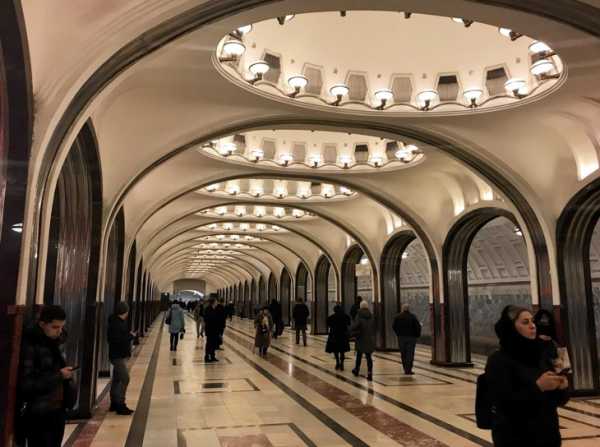
In fact, there are 244 metro stations in Moscow, including monorails, so it is rather dificult to choose the best ones. Twenty more are coming this year. I would suggest that you visit as many stations as possible and make your own list. 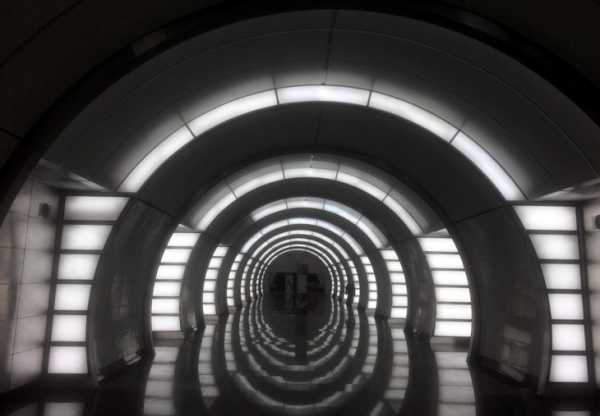
Today we will speak about 5 metro stations that are worth seeing, but the list is not limited! There are other amazing metro stations in Moscow that you can visit during you World Cup trip.
1. Ploschad Revoljutsii (Площадь Революции) – blue line, centre.
Ploschad Revoljutsii (Revolution Square) metro station was founded in 1938 as a part of an interchange junction for 3 metro stations. Its uniqueness comes from the number of sculptures it has – 76.
The metro station was opened three years before the Great Patriotic War started. In 1941 all the sculptures were moved to Central Asia, but unfortunately most of them were significantly damaged due to the evacuation procedures rendering them featureless. Luckily, each sculpture was cloned four times which made the reconstruction easier. The sculptures were restored in 1944.
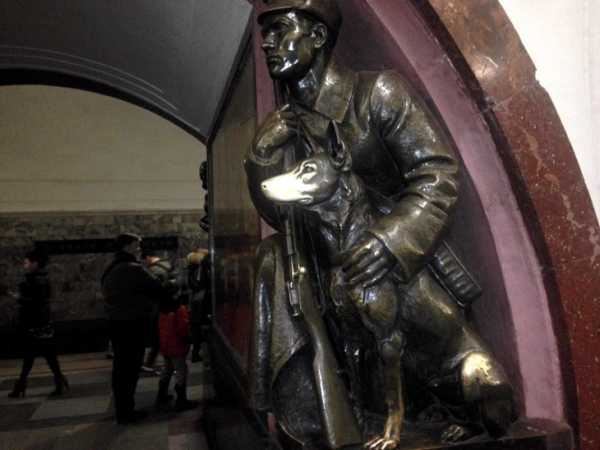
This station is one of those very deep underground stations typical for some zones in Moscow and Saint Petersburg, decorated with light and dark granite on the upper wall and with limestone with dark and light blotches on the lower part of the wall. The top of the tunnel platform walls are covered with grey marble.
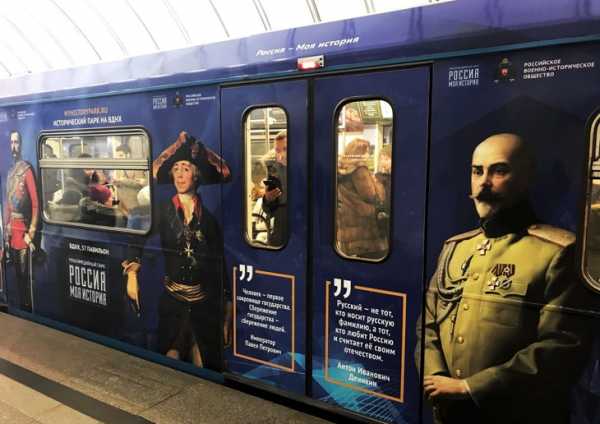
However, let´s set aside the beautiful decoration of the walls and turn to the most notable part of the station which is undoubtedly the sculptures placed on each side of the aisle between the central and side parts of the platform. There are 76 sculptures (initially 80) but only 20 of them represent a unique style, 18 statues are repeated four times.
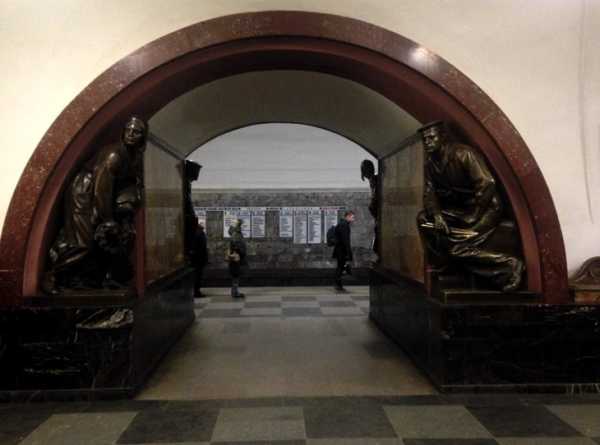
There are two halls: east and west. The eastern one leads to Bogoyavlenskoi street and Nikolskaya street, and the western one leads to the Revolution Square which is also connected to Teatralnaya station, the one where the Bolshoi Theatre is situated.
Ploschad Revoljutsii lies in the heart of Moscow: Kremlin, Red Square, St. Basil Cathedral, Historical museum, Cathedral of Our Lady of Kazan, and many other sights are situated nearby.

There are some interesting and funny facts connected with this metro station and its sculpture of a dog. One interesting tradition exists among students: if you touch the nose of the dog, you will get high points for the exam, and if you touch the paw, you will pass the exam or test. This is the reason why you will find the poor dogs’ noses and paws shiny. There is another lovable tradition: of you touch the leg of a sculpture of a girl with a book, you will be cured of unhappy love.
There is also a poor bronze sailor with a revolver in his hand. Someone constantly steals his gun.
2. Komsomolskaya (Комсомольская) – red line and circle line, centre
“Komsomolskaya” has proved to be the most beautiful metro station in Moscow due to its unique design devoted to the struggle of the Russian people for independence.
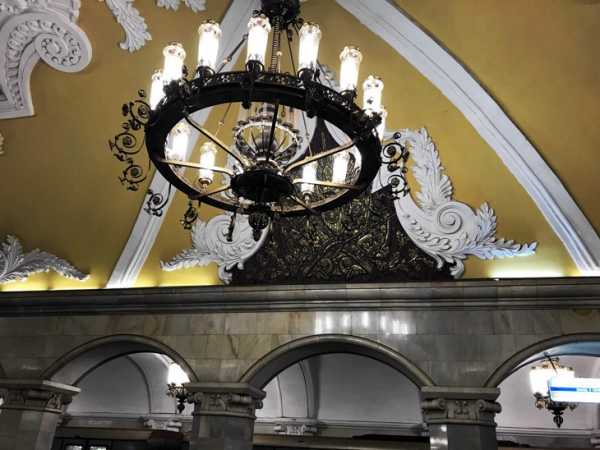
The ceiling of the station is decorated with eight mosaic panels made of smalt and precious stones. Six of them depict Aleksander Nevskiy, Dmitry Donskoy, Kuzma Minin, Dmitry Poscharsky, Aleksander Suvorov, Soviet soldiers and generals facing the walls of Reichstag.

Military artifacts – shields, helmets, muskets, broadswords – are installed into triangular figured frames on the base of the arch.
The station is situated at the intersection of three rail stations: Leningradskiy, Kazanskiy and Yaroslavsky, so that from this point you can easily travel to the North of Russia, to the Asian part and to the Far East.
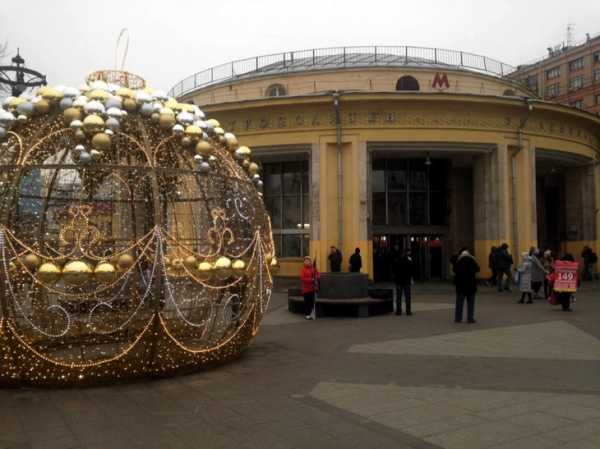
Novokuznetskaya metro station
Komsomolskaya station is always overcrowded with people from every part of Russia arriving or departing from the capital city. If you want to review each drawing and mosaic artwork, come early in the morning or late at night to avoid large gatherings of people and to be sure you won’t be a victim of the pickpockets.
3. Spartak (Спартак) – violet line, suburbs
This is one of the recently opened stations in Moscow. In fact, a lot of metro stations were launched in the past two years, some of them have been under construction for twenty or even thirty years. It is perfectly understandable: the World Cup is fast approaching and Moscow city must not only be “stunning-looking” but also should have a well-functioning transport network during those few weeks of June 2018.
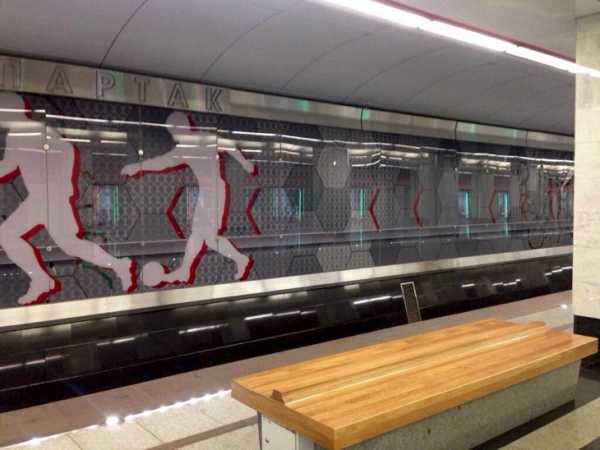
The construction of the station started in the middle of the 70s but was suspended after a few years. The problem for Spartak station was Tushino airport situated nearby and used for military purposes which made it impossible for civilians to walk around as it was a restricted area. Now the former military site is used as a perfect location for music festivals and other loud events.
Apparently, the station would have never been constructed if it was not for the housing estates emerging in the area in 2000. It was initially called Volokolamskaya metro station like the highway above it, but the plans changed when in 2006 one of the biggest Football clubs in Russia, “Spartak”, decided to construct its own stadium close to Tushino airport. Hence, a lot of investors stated intentions to put money into further construction of a metro station that in fact was almost finished.
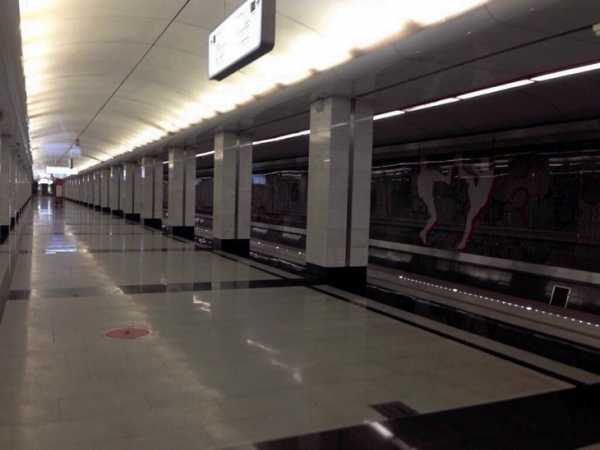
By the end of 2014 alongside the stadium the new station called «Spartak» welcomed its first passengers. As many other metro stations in Moscow, Spartak is decorated with marble and granite which makes it very bright. Undoubtedly, the main theme of the station is football, in particular Spartak football club. Metro pillars are decorated with red stripes – the corporate colour of the club – and the Spartak logo is displayed on the glass.

Taganskaya metro
This metro station has double secured walls to prevent fans of vandalising after the games. A very smart idea, considering the hot temper of Russian football fans. Don’t be afraid though: police officers are always there and during the football games the Russian metro will definitely have better-than-average security.
4. Mendeleevskaya (Менделеевская) – grey line, circle, centre
If you are planning to visit Russia this year for the World Cup, take a look at the circle metro stations. Some of them look really amazing, like Mendeleevskaya Metro Station named after a brilliant Russian scientist who invented the periodic table.

This metro is situated on the Timiryazevsko-Serpukhovskaya (grey) line and captures attention with its beautiful pillars, which are faced with the white marble. The metroplatform lined with black and grey granite. The platform walls are decorated with figures of chemical substances, atoms, and molecules.
However, the most important, attention-attracting detail is the monument to stray dogs that make us think about the hard fate of homeless animals and their importance in science.
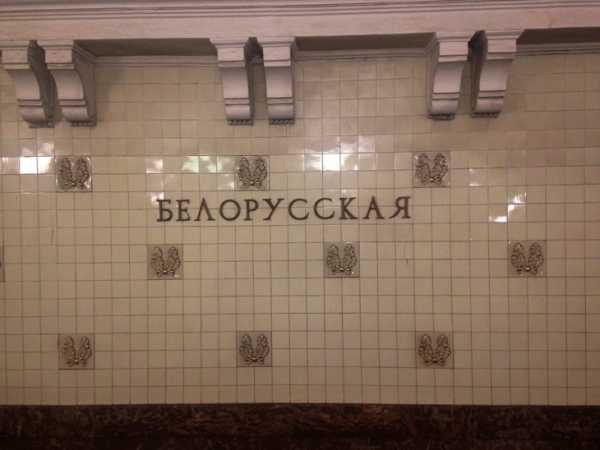
5. Belorusskaya (Белорусская) – green and circle line, centre
Belorusskaya (Belorussian) metro station got its name from the railway station it connects with. The main theme of the metro station is “Life and culture of Belorussia”, the biggest ally of Russia and a party of the Customs Union.
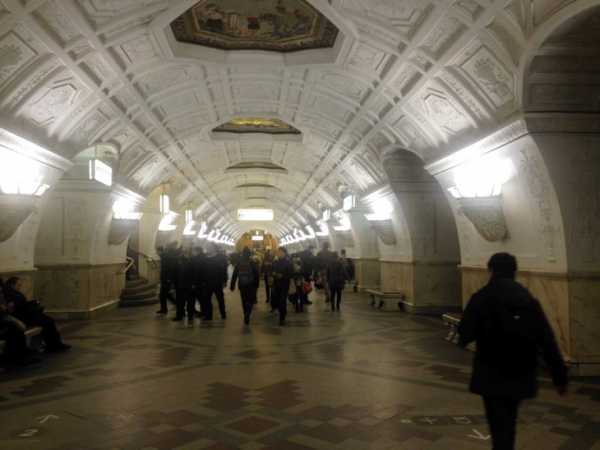
The central entrance is decorated with 12 panels, while the station itself is fitted with light marble on the walls and granite on the floor. The station is illuminated by crystal lamps that resemble ancient vases. There is another sight inside this metro station – a monument to Belorussian guerrillas, which might be a good photo shot.
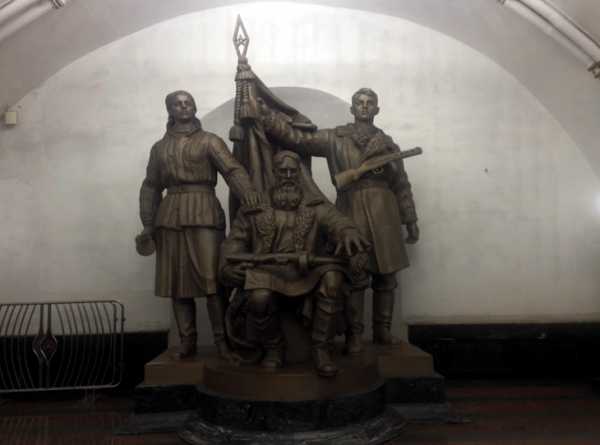
Belorusskaya station is not only vital for national and international railway transportation. From here you can also catch a train that takes you to Sheremetyevo Airport, AeroExpress.
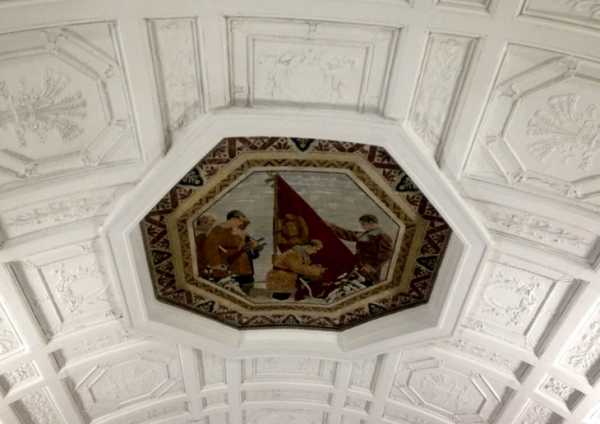
And this is not it! There are dozens of incredibly beautiful metro stations in Moscow that you cannot miss visiting before you leave.
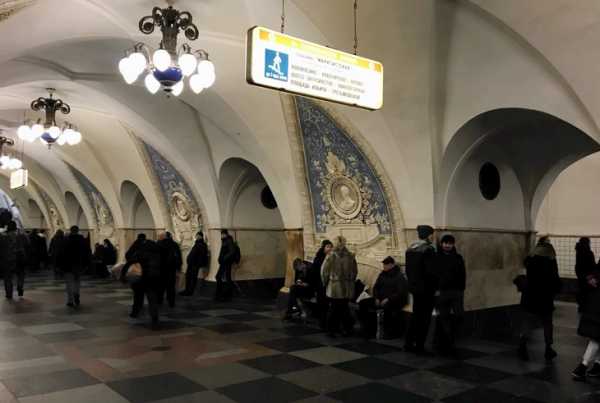
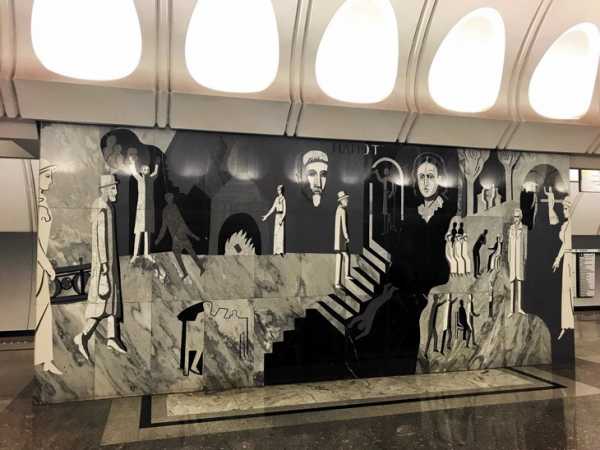
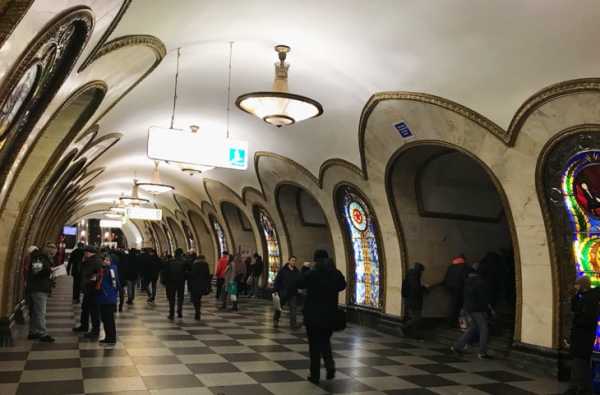

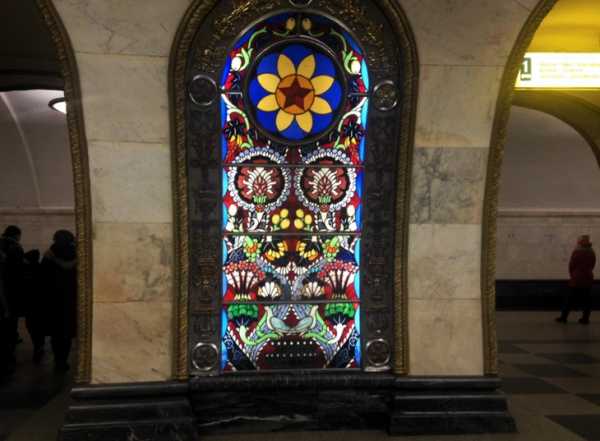

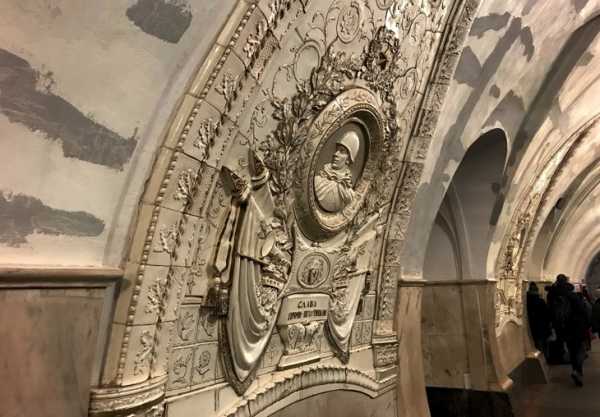
This metro station is under minor reconstruction
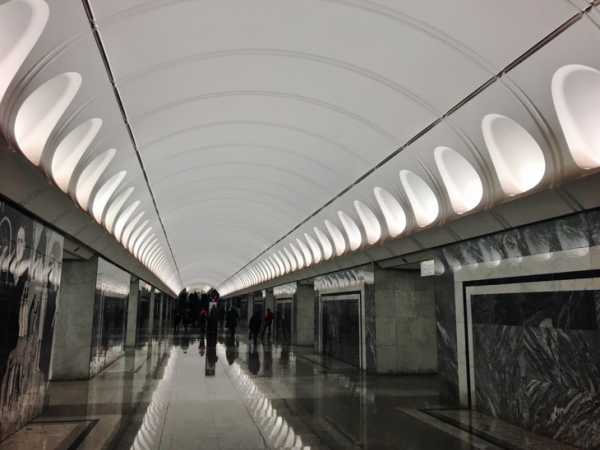
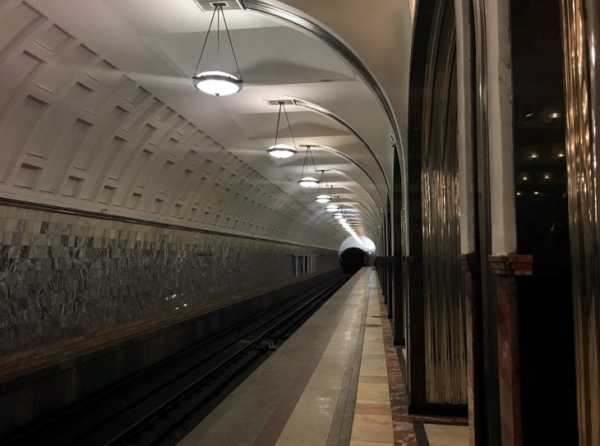
I would like to invite you all to Russia this year to see the World Cup 2018. June is such a wonderful month in Moscow when it is blossoming, sunny and not very hot. The prices for the accommodation might be rather high but we can arrange it. We can also arrange a guided tour of Moscow metro stations and to show you the best places to visit. Contact us!
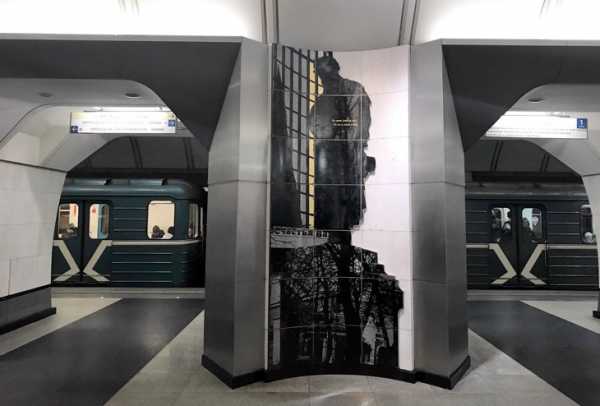
Do not forget to leave you comment and to subscribe to our YouTube, Instagram, Facebook and Twitter pages.
www.likeyourtrip.com
Moscow 2018 | Red Square
This is Moscow's and Russia's main square, the immediately recognizable cityscape few foreign films about Russia do withoutThis is Moscow's and Russia's main square, the immediately recognizable cityscape few foreign films about Russia do without
 This is Moscow's and Russia's main square, the immediately recognizable cityscape few foreign films about Russia do without. Surrounding the square are the Kremlin with its Nikolskaya and Spasskaya Towers overlooking the square, the State Historical Museum, GUM department store with multicoloured windows and outdoor café, and Pokrovsky Cathedral (Saint Basil's Cathedral), behind which there opens up a peaceful view of the Moskva River and the tranquil Zamoskvorechye District beyond. Also in the square or facing it are the Lobnoye Mesto (execution spot), Lenin's Mausoleum, the monument to Kuzma Minin and Dmitry Pozharsky, the leaders of the second people's militia, which freed Moscow from Polish occupation in 1612, and a part of the Kremlin Wall with entombments of famous Soviet political and cultural figures, including Joseph Stalin and the writer Maxim Gorky.
This is Moscow's and Russia's main square, the immediately recognizable cityscape few foreign films about Russia do without. Surrounding the square are the Kremlin with its Nikolskaya and Spasskaya Towers overlooking the square, the State Historical Museum, GUM department store with multicoloured windows and outdoor café, and Pokrovsky Cathedral (Saint Basil's Cathedral), behind which there opens up a peaceful view of the Moskva River and the tranquil Zamoskvorechye District beyond. Also in the square or facing it are the Lobnoye Mesto (execution spot), Lenin's Mausoleum, the monument to Kuzma Minin and Dmitry Pozharsky, the leaders of the second people's militia, which freed Moscow from Polish occupation in 1612, and a part of the Kremlin Wall with entombments of famous Soviet political and cultural figures, including Joseph Stalin and the writer Maxim Gorky.Before the 1900s, the Red Square, the city's finest place (the Russian word for "red" – "krasny" – meant "beautiful"), was always abuzz with life. Here vendors hawked their wares, royal edicts were read out loud, the occasional public executions were staged, and the public house Pod Pushkoy by the Lobnoye Mesto, surrounded by trophy cannons, was always full. The archaeological digs conducted here yielded lots of small change, cheap glasses and human teeth.
While Red Square is still crowded most of the time, fairs are only held here during the Christmas season. Those fairs are lots of fun, with skating, the honey brew, hot pancakes and beautiful Russian porcelain. At the beginning of September, Red Square becomes the grounds of the Spasskaya Tower international festival of military brass bands, and welcomes the military parade on Victory Day, May 9. The rest of the year the square remains open to strollers, enjoying the sight of the illuminated GUM and listening to the chimes of Spasskaya Tower.
welcome2018.com
Moscow's Red Square: Beautiful in Red
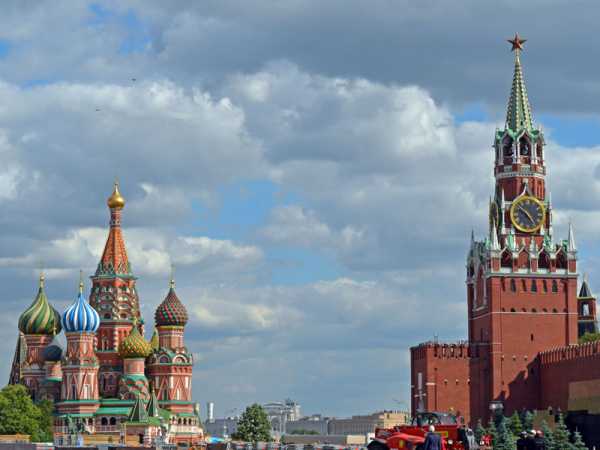
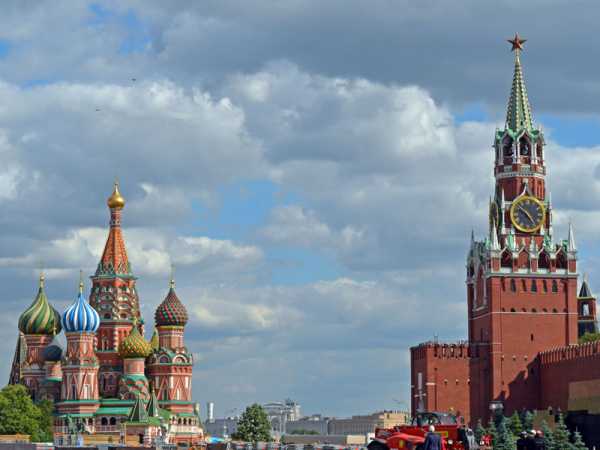
Moscow’s Red Square: Beautiful in Red
Depending on how you translate it from Russian, Moscow’s Red Square – “Krasnaya Ploshchad” – is either red, or beautiful. To many, it’s definitely both.
Rolling Out the Red CarpetKrasnaya’s dual ancient meanings of “beautiful” and “red” aptly describe this historic brick square where Russian czars, Soviet leaders, and Soviet parades displayed military might and Communist cults of personality. Who was in and who was out of the lineup of leaders watching the spectacle from atop Lenin’s Mausoleum was once the stuff of Cold War speculation.
Red Square first served as a 16th century marketplace, then a gathering place for ceremonies, coronations, parades, and even executions. During Soviet times, Red Square was the site of military parades and displays of war machinery, vivid reminders of the 1917 Great October Socialist Revolution, and the beginning of 70 years of Soviet rule. Today it’s often the first place visitors see in Moscow, drawn to those multi–colored onion domes of St. Basil’s Cathedral, constructed during the reign of Ivan the Terrible.

Bright colors and details were added to St. Basil’s Cathedral over a 200-year period Photo credit: Helen Holter
This place is immense: about the length and width of an American football field, with Moscow’s main streets originating and branching out from it. Both Red Square and the Kremlin are treasured UNESCO-listed sites, with the adjacent Kremlin once the seat of Russian Orthodox power; today it is the seat of Russia’s political power.
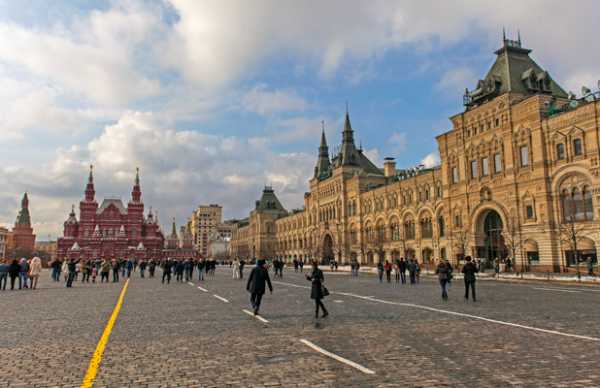
GUM Department Store (right) and the State Historical Museum (red brick) line immense Red Square Photo credit: Jonathan Irish
What to See- St. Basil’s Cathedral (Собор Василия Блаженного): This iconic, larger-than-life onion-domed cathedral was built by a larger-than-life Russian ruler: Ivan the Terrible, commemorating his 1552 military victory over the Tatars in Kazan. A persistent legend is that Ivan the Terrible blinded the cathedral’s chief architect so he never again would build anything as beautiful as St. Basil’s, with its nine chapels and riotous colors and domes. If you’re lucky you might hear ancient holy songs sung a capella, echoing off walls inside the towers.
- Tip: Check out Lobnoye Mesto, a 16th-century platform in front of St. Basil’s where Ivan the Terrible once issued his decrees, and where religious ceremonies once took place. It comes from the Russian word “lob” for “forehead.”
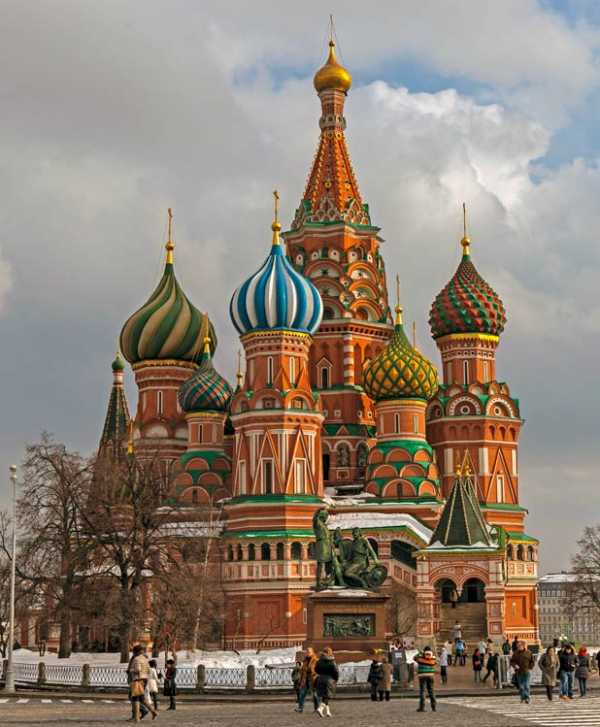
St. Basil’s Cathedral has survived hundreds of seasons in Moscow’s Red Square Photo credit: Jonathan Irish
(click on photo for larger version)
- Spasskaya/Savior Tower (Спасская башня): Built in 1491, this tower is best known for its star-topped clock and “Kremlin chimes,” which keep Moscow time. The gate below the tower was once the official entrance to the Kremlin, where Politburo officials and Soviet leaders passed through.
- Tip: Don’t leave Red Square without listening to the “Kremlin chimes,” in full on the hour, in part on the quarter-hour.

In 1937, a ruby-red star replaced Spasskaya Tower’s Russian imperial symbol – a double-headed eagle Photo credit: Jonathan Irish
- Kremlin Walls, Churches & Buildings: This includes the Kremlin cathedrals – Assumption, Annunciation, Archangel and Dormition; the Kremlin Wall Necropolis where more than 100 socialist heroes and Russian notables are buried; the Czar Bell and Czar Cannon; and several palaces. The Tomb of the Unknown Soldier and Eternal Flame are sober reminders of Soviet wars and losses. (For some buildings you need to purchase a ticket to enter.)
- Tip: Search for names of the famous dead in the Kremlin Wall Necropolis; the last one buried was short-lived Soviet leader Konstantin Chernenko in 1985.

On Kremlin grounds: Orthodox crosses and onion domes mingle with Russia’s national flag of white, blue and redPhoto credit: Helen Holter
(click on photo for larger version)
- Lenin’s Mausoleum (Мавзоле́й Ле́нина): Walk two floors down into the darkened tomb past the embalmed body of Communist icon and Soviet leader Vladimir Ilyich Lenin. The Bolshevik Revolution leader died in 1924; his body has been on display for more than 90 years. Some say it’s time to bury Lenin, but the symbolism of such a move has kept officials from taking action.
- Tip: No photos are allowed. Be forewarned – you won’t have much time to view Lenin in his sealed sarcophagus, and you are expected to be respectful.
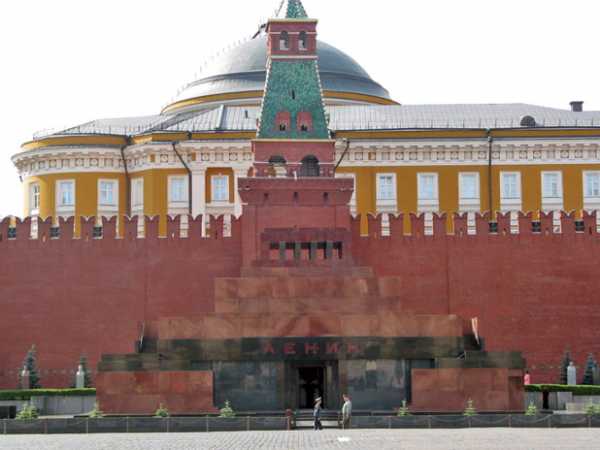
The black mausoleum housing Lenin’s embalmed body is still an attraction in Moscow’s Red Square Photo credit: Douglas Grimes
- Kazan Cathedral (Казанский собор): This pink-and-white gold-domed structure near Resurrection Gate is a replica of the 1636 Russian Orthodox Church destroyed by Stalin during Soviet times. Reconstructed, reconsecrated, and re-opened in 1993, Kazan’s bell tower peals ancient melodies, an audible souvenir from one of Moscow’s most important and historic cathedrals.
- Tip: Pause just inside the church in the tiny Iberian Chapel, where royalty once prayed. As in most churches, no photos are allowed inside.

Stalin demolished the original Kazan Cathedral, ostensibly because it impeded the flow of military parades in Red Square Photo credit: Helen Holter
- GUM State Department Store (Государственный универсальный магазин): This is not your mother’s GUM, the one from Soviet days. It was Russia’s first enclosed shopping mall with galleries, arcades and bridges – and long lines, Soviet style. Today GUM (pronounced “goom”) is privately owned with several hundred stores, many selling high-end luxury clothing, cosmetics and jewelry. Stop by “Stolovaya 57” (Cafeteria 57) for a trip back into Soviet times: this replica of a 1950s proletarian cafeteria serves up Russian comfort food like beef stroganoff and solyanka along with delicious pastries and espresso.
- Tip: For more Soviet nostalgia, head to Section 100 on the top floor where there once was a secret clothing store for Communist Party elites. Then head downstairs to decadent Gastronome No. 1, with its alluring bakery, chocolates, and wines.

GUM’s elongated shopping galleries contained 1,200 stores before the 1917 Russian Revolution Photo credit: Helen Holter
(click on photo for larger version)
- Kremlin Armory Museum (Оружейная палата): Once producing and storing weapons, this prestigious 200-year-old museum today displays treasures of the Kremlin, among them Fabergé Imperial eggs, Russian icons and artwork, crown jewels, Catherine the Great’s ball gowns, equestrian saddlery, and even staggeringly oversized royal carriages, Cinderella-style. (You need a ticket to get into the Armory.)
- Tip: Leave plenty of time to visit the Armory; it can get crowded – especially at the Fabergé Imperial egg display – but it is worth the wait.
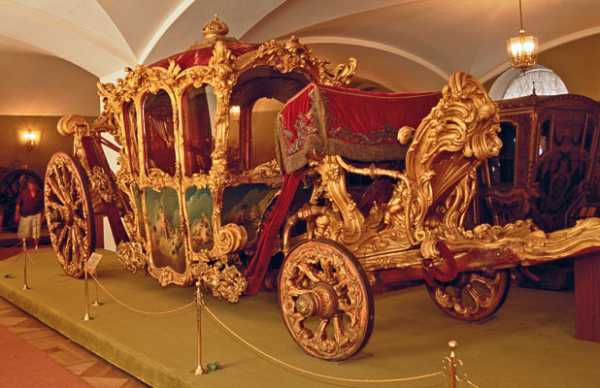
One of many gilded, ornate royal carriages on display at the Kremlin Armory in Moscow Photo credit: Mark Stephenson
- State Historical Museum (Государственный исторический музей): This 1881 red brick building is located opposite St. Basil’s Cathedral in Red Square, tracing Russian history from earliest times to the present. The museum’s vast collection – more than four million pieces – includes Novgorod birch bark scrolls, Russian ceramics, Scythian gold finds, and manuscripts dating back 1,000 years, along with nearly two million coins – Russia’s largest coin collection.
- Tip: If you don’t have a tour guide, rent an audioguide or use a travel book; much of the museum’s information is in Russian.

The vast State Historical Museum is opposite St. Basil’s Cathedral in Red Square Photo credit: Kelly Tissier
Travel to Russia with MIRMany of MIR’s tours to Russia include a memorable visit to Moscow’s famed Red Square, where you can sense Russian and Soviet history in every step you take. You can also book a hand-crafted, custom private journey based on your interests and timeline. MIR’s knowledgable guides offer unique perspectives and insider information that only an on-the-ground local would know, making your journey utterly unique and unforgettable.
(Top photo: Red Square is the heart of Moscow, the symbol of Russia. Photo credit: Kelly Tissier)
PUBLISHED: February 25, 2015
Tags: Armory | Beatles | Bolshevik Revolution | Doros Men's Ensemble | Fabergé eggs | Great October Revolution | GUM Department Store | Helen Holter | Hero Cities | Ivan the Terrible | Kazan Cathedral | Kremlin | Kremlin Armory | Kremlin churches | Kremlin Wall Necropolis | Kremlin walls | Lenin | Lenin's Mausoleum | Lenin's tomb | Moscow | Red Square | Russia | Soviet Union | Spasskaya Tower | St. Basil's Cathedral | State Historical Museum | UNESCO | Western Russia
Related Posts
www.mircorp.com

